Depending on who you ask, tarantulas are either frightening or fantastic. However, regardless of what you think of them, it’s undeniable that they’re fascinating animals. Their hairy bodies, eight eyes, and eight legs make them very different from us and somewhat alien. One of the most interesting things about tarantulas is their fangs.
Most people know that tarantulas do indeed have fangs, but that’s about it. They don’t know too much about these appendages. Today, we’re going to change that by taking a look at X frightening facts about tarantula fangs, let’s dig in!
7 Facts about tarantula fangs
1. The fangs of tarantulas are about 1.5 inches long
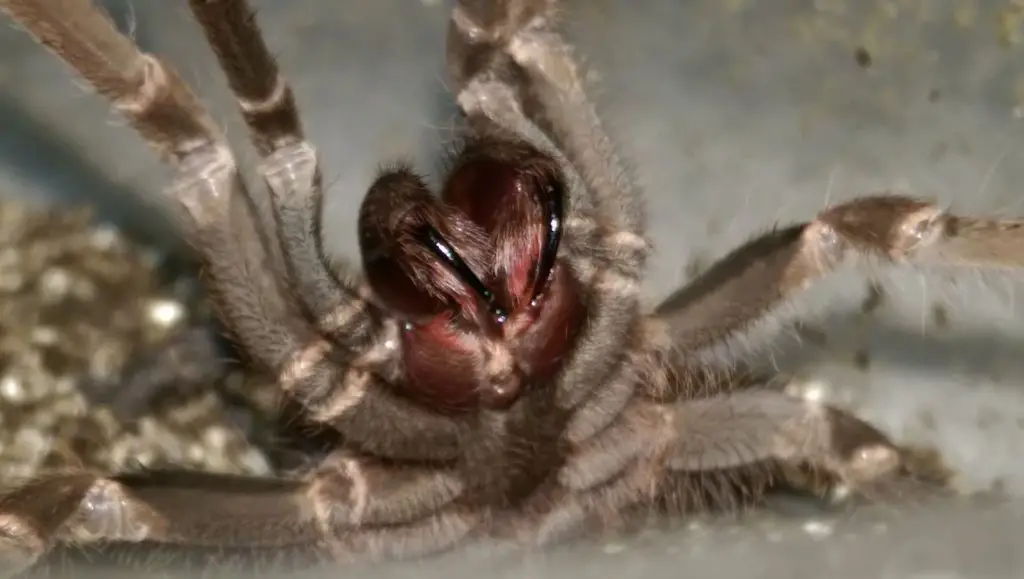
There are over 800 different tarantula species, all with their own unique colors, temperaments, behaviors, and bodies.
However, one thing that they all have in common is that they all have fangs.
The average size of tarantula fangs is about 1.5 inches. However, those of some species are much bigger than those of others.
Typically, the larger the spider, the larger the fangs. Species such as the Thai Black and the Goliath Birdeater have fangs that are quite a bit bigger than 1.5 inches while those of dwarf species such as the Brazilian Jewel are quite a bit smaller.
2. The fangs are hollow inside
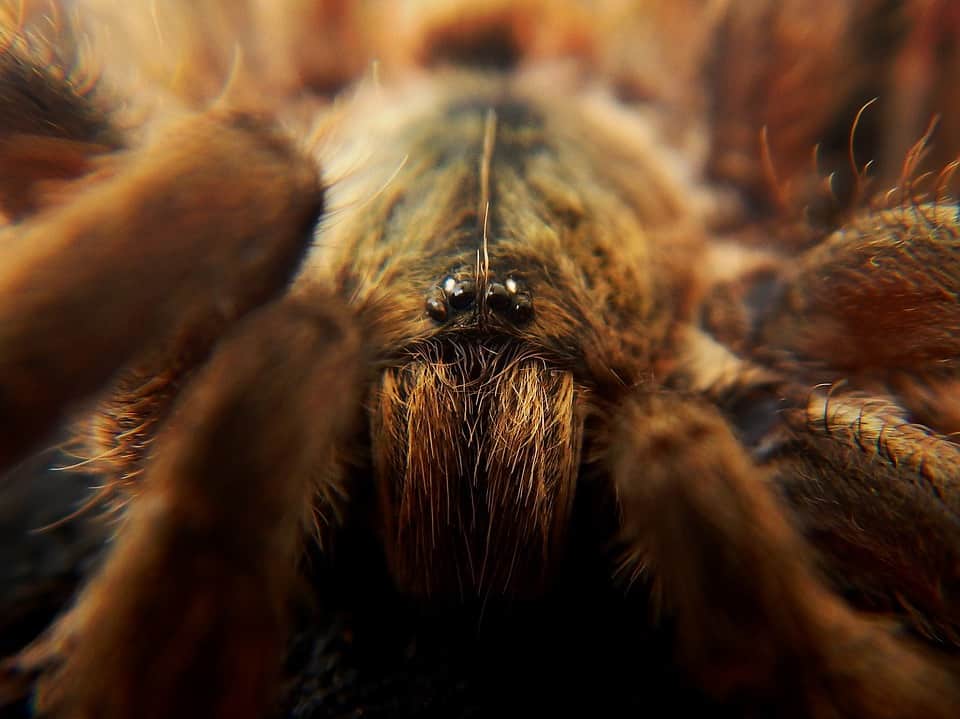
Tarantula fangs are hollow because every single species is venomous. Thus, they need to have hollow fangs so that they can inject the venom into their prey.
However, while every species is venomous, the venom is not equally strong in all species. New World spiders typically have much weaker venom because they have urticating hairs that help them with deterring predators.
Old World tarantulas, on the other hand, do have quite a potent venom. Species such as the P. Regalis have venom that’s extremely painful and causes muscle cramps for days!
Luckily, tarantulas do not bite humans very often.
3. Tarantulas shed their fangs
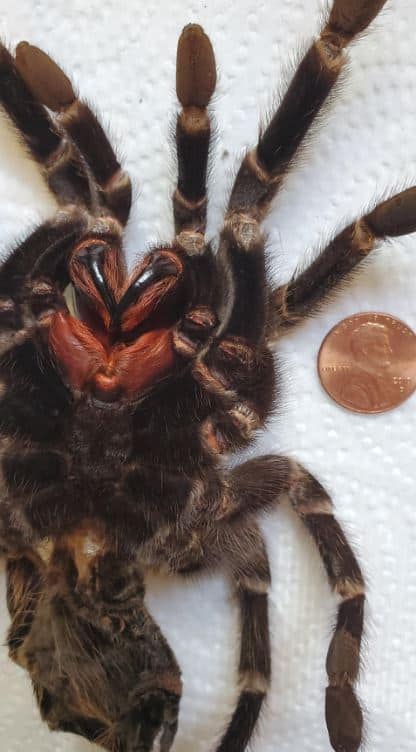
Tarantulas grow quite quickly, but unlike you and I, they do not have stretchy skin that grows with them. Instead, they have an exoskeleton. They shed this exoskeleton in a process called “molting“. This process happens every so often when they’ve grown too big for their current exoskeleton.
When they molt, they shed their entire exoskeleton, including their fangs!
As a result, they typically do not eat for a few days after the molt because they need time for their fangs to harden. Once they’ve hardened, they’re ready to be used again until the next molt.
4. They sometimes lose a fang
Molting is not a fun time for tarantulas. It’s stressful, and things can easily go wrong. For instance, they typically stop eating a few days prior to molting because otherwise, they can get stuck in their old exoskeleton.
Another common problem is that they lose one or both of their fangs in the process. This is a big problem for them because they need them to eat!
However, if they manage to survive until the next molt, their fangs do fortunately grow back. The problem is that the time between molts can be quite long for adults. Juveniles and spiderlings, molt quite frequently, but the time between molts for adults can be months. Luckily, tarantulas can go for extremely long periods of time without eating.
If you own a tarantula that’s lost one or both of its fangs, try supporting them by feeding them cricket soup.
5. Females have larger fangs than males
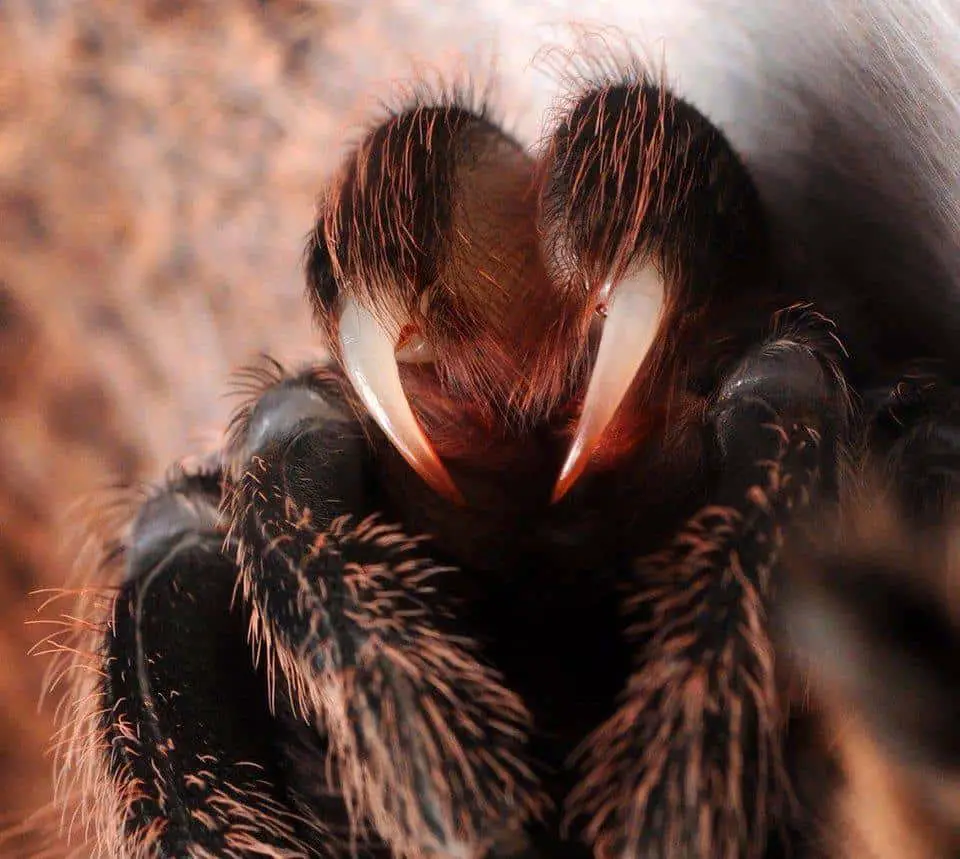
In many species, males are larger than females. In tarantulas, the opposite is the case. Females are almost always much larger than males and as a result, they often have larger fangs as well.
They use these fangs to catch prey, sure, but they also use these fangs against the males! Tarantula females often eat the males after they’re done mating, which is where being bigger and having larger fangs comes in quite handy.
Some male species of tarantulas have even adapted to this threat by growing a certain appendage that helps them block the female’s attacks.
6. Tarantulas do not use their fangs to chew
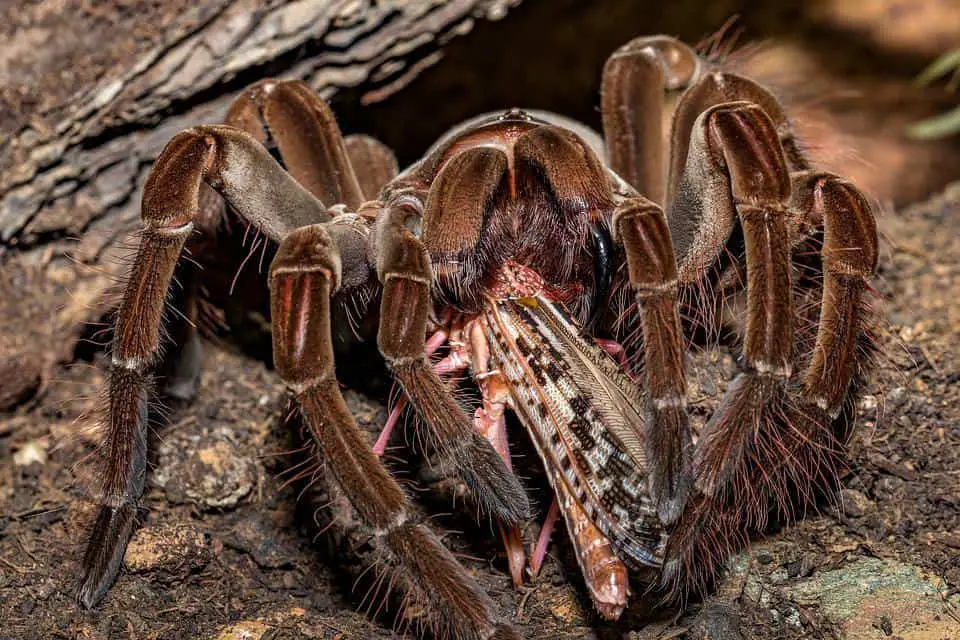
Some people believe that tarantulas use their fangs to chew their food, but that’s not exactly how it works. Tarantulas are ambush predators. Typically, they’ll spin a web in front of their burrow, the vibration of which lets them know that prey is nearby.
They will then ambush this prey, bite it with their giant fangs and inject their venom. The venom does not only take down the prey, it also liquefies their insides turning them into a sort of soup.
The tarantula then uses its sucking stomach to suck up the meal.
7. They show their fangs when they feel threatened

One thing that tarantulas are known for is their threat posture. It’s something they do when they feel like they’re being threatened. They will raise their forelegs and expose their fangs to tell whoever is threatening them to back off.
This is quite an intimidating sight. After all, their fangs are quite big. As a result, the threat posture often works in deterring threats.
Final words
There you have it, everything you’ve ever wanted to know about tarantula fangs! Tarantulas really are remarkable creatures and their venom-injecting fangs are certainly one of the most fascinating parts about them.
I hope this overview contained something that you didn’t know yet and that it taught you something new about these eight-legged creepy crawlers.
- How Long Do American Eskimo Dogs Live? Important Factors and Care Tips - September 29, 2023
- Do American Bulldogs Need Grooming? Essential Tips and Care Guidelines - September 29, 2023
- Do Bengal Cats Enjoy Playing? Essential Tips for Keeping Them Active - September 29, 2023